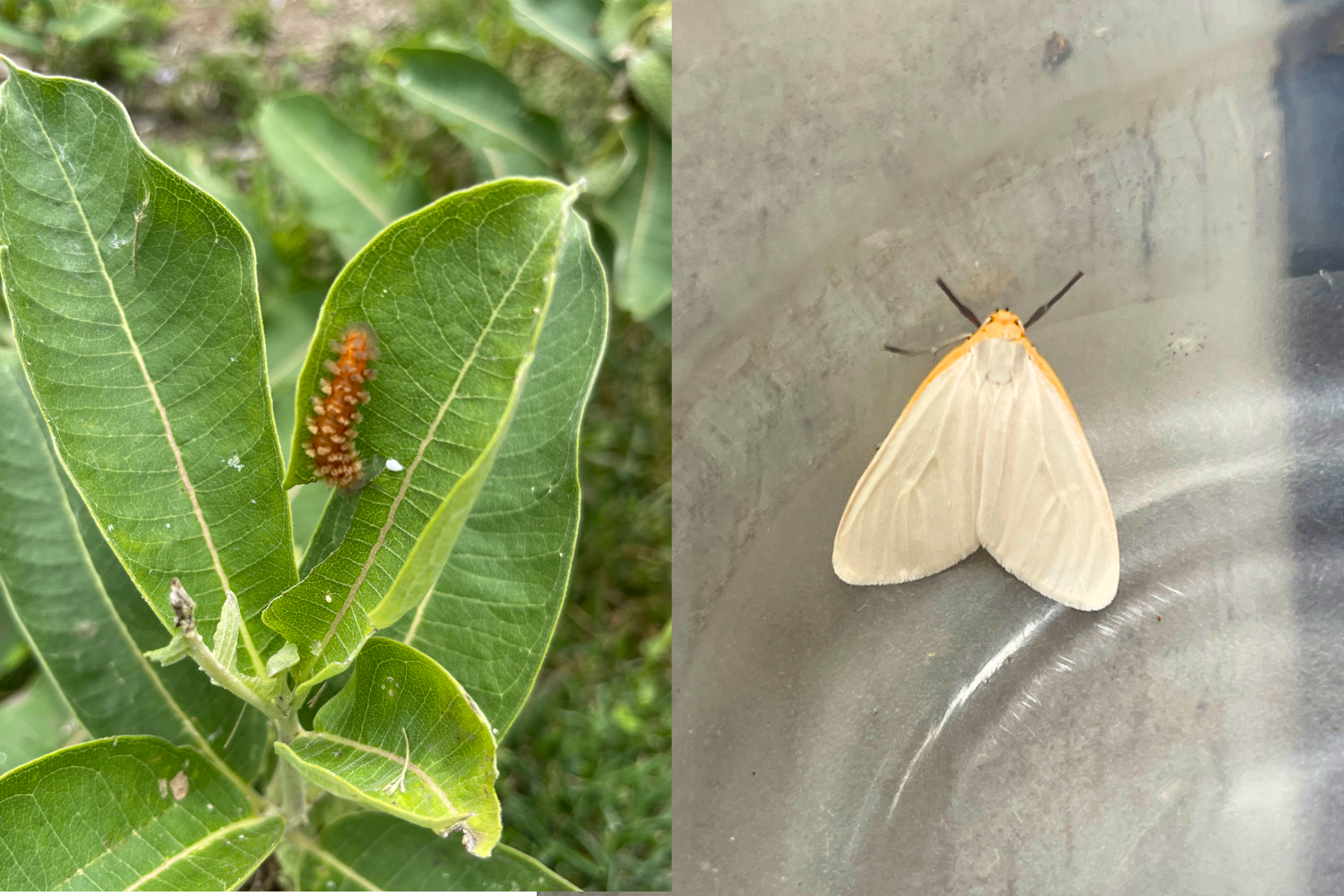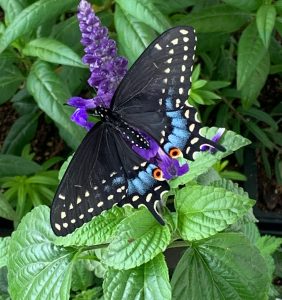Did you find a random caterpillar while outside? It can be fun to bring it in and see what it turns into after metamorphosis. Here are a few tips for how to take care of moth caterpillars to increase the chances of survival for your new pet.
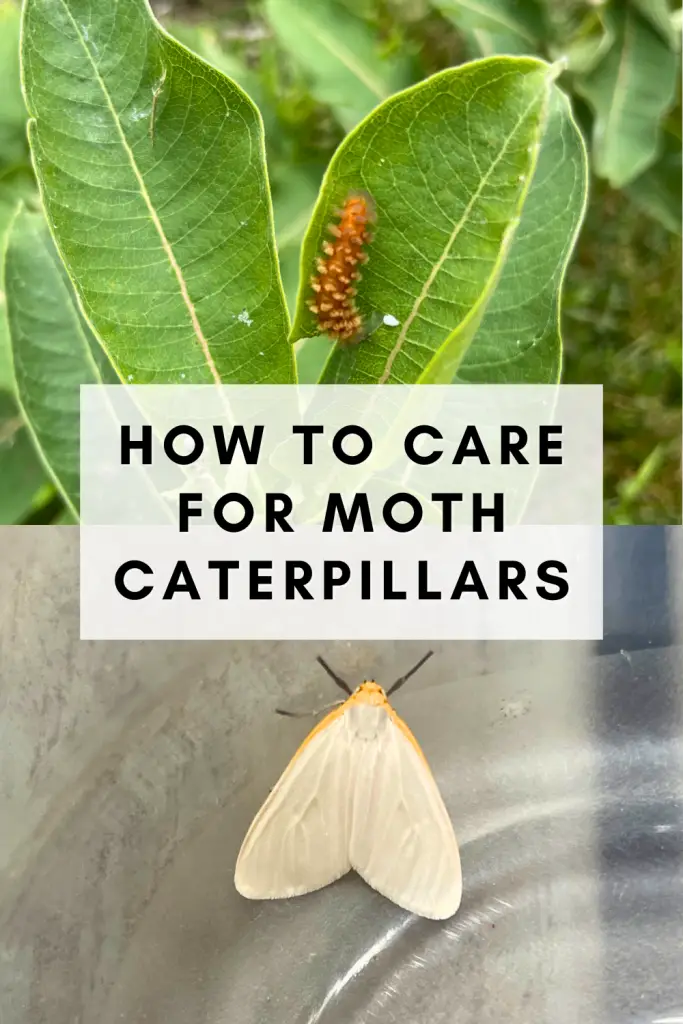
Finding moth caterpillars outside is super common, especially since each species usually has many host plants it can eat, unlike many butterfly species that only eat a few specific host plants as caterpillars.
Caterpillars are fairly easy to take care of, however there are some things you need to know to increase their chances of survival.
What do moth caterpillars eat?
While moth caterpillars may have many host plants – plants they prefer to eat in the larval stage – they most likely can’t eat just anything.

I remember finding caterpillars as a kid and putting them in a jar with grass and random plants. However, it’s highly unlikely your new caterpillar eats grass. Most caterpillars eat leaves from specific trees or broadleaf weeds.
If you find the moth caterpillar on a plant, there’s a good chance that plant is one of its preferred host plants. Especially if you can see small holes where the caterpillar has been eating.

We recently found this caterpillar on a milkweed plant while checking for monarch caterpillars. It was clear it had been eating the milkweed so that’s what I kept feeding it.
You can also attempt to identify the caterpillar you’ve found to determine which plants it will eat.
How to identify what kind of caterpillar you found
Identifying moth caterpillars can be a bit more difficult than identifying other bugs. Most of them look similar and there are so many different species of moths.
However there are a couple different methods you can try to help you get as close as possible.
Identify bugs with your iphone photo app.
Take a photo of your caterpillar.
Inside the photos app, open the photo and tap the information icon at the bottom of your screen.
Select look up- bug.
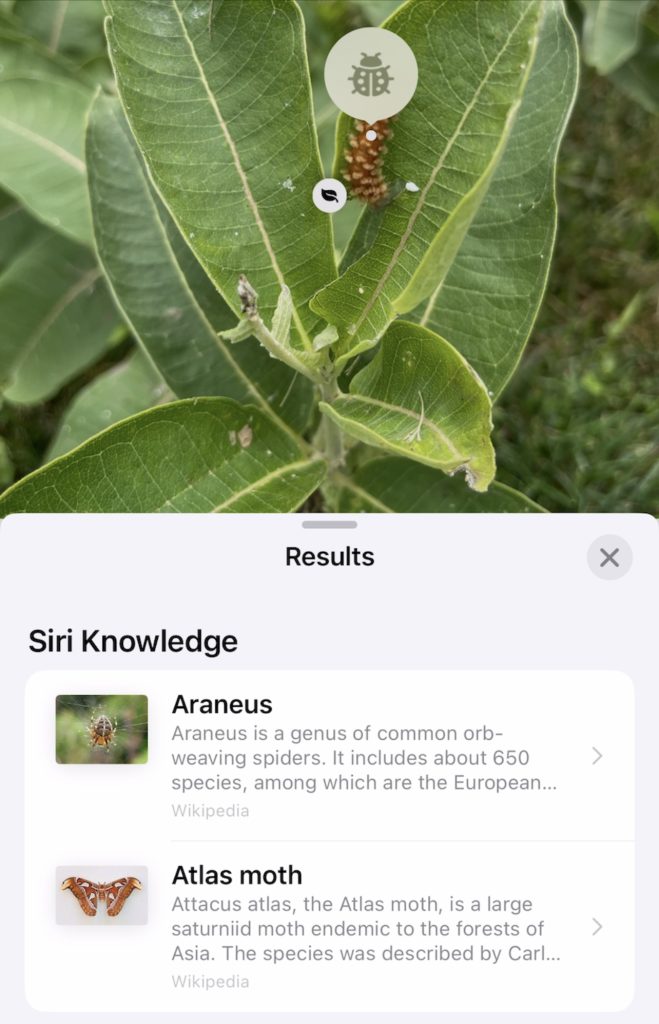
Siri knowledge will provide a couple wikipedia articles that most similarly match the photo you took. Neither of these are the correct results for my caterpillar though.
Use picture insect app to identify your caterpillar.
Download the Picture Insect App from the app store.
Take a photo of your caterpillar or select a photo from your library.
Tap the check mark to identify the insect.
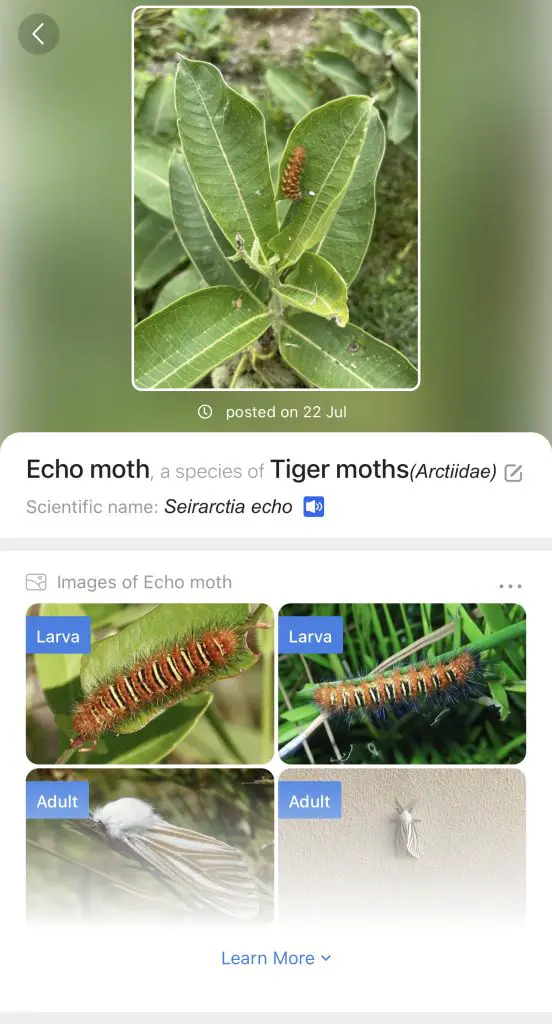
Picture Insect will give you a lot of information about your insect including a description, answers to commonly asked questions, and typically it will include information about the food it eats.
You can also just google “host plant for [moth caterpillar]” once you have identified the species.
Unfortunately, both of these identification methods are typically inaccurate in the larval stage which I assume is due to the amount of similar looking caterpillars. However, you can browse the similar images that show up to see if your caterpillar actually looks like the others pictured.
If the results are wrong, it’s usually pretty apparent. Take a photo from another angle or try to get a clearer picture and analyze it again until you find a result that seems plausible.
This echo tiger moth caterpillar is close, but not exactly the same as the one we had. Mine didn’t have stripes, but they did have similar diets.
Learn how to care for your moth caterpillar

I ultimately determined our caterpillar might be a salt marsh tiger moth and verified that milkweed was one of its host plants.
I also learned it will wrap itself in leaves and create a cocoon using silk and its own hair before emerging a couple weeks later as a moth.
We kept it in a small tupperware container with air holes poked in the top, and the caterpillar ate for a couple days before creating its cocoon as expected.


Wait for your moth caterpillar to emerge from its cocoon
After a couple weeks, our moth finally emerged. We just left it in the tupperware container, checking in on it every day or so.

When it finally emerged, it didn’t look exactly like the salt marsh tiger moth I expected. The salt marsh species has black spots. So I took another photo and uploaded it to Picture Insect, which it correctly identified as a dogbane tiger moth.

Even though the original identification was a little off, we figured out it was a species of tiger moth and ate milkweed, so it was still helpful in determining how to care for it. Dogbane makes sense since milkweed is a species of dogbane!

I hope these types for how to care for moth caterpillars were helpful! Overall, my kids and I had such a fun experience bringing in a new species of caterpillar, observing its lifecycle, and identifying and releasing a new moth!

